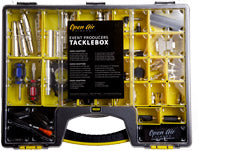Your Guide to Video Cables Part 1: The Most Common

In the digital age, the process of projection is ultimately the communication and interpretation of signals. These signals come in a digital file and contain essential details as to the nature of the image we're supposed to see, including its shape, color, and specific illumination. When you run these signals through the corresponding player and onto the screen, you're basically witnessing an act of translation. Think of yourself as a diplomat meeting with a foreign dignitary who doesn't speak your language. The console you use to play the file and the screen onto which the images are projected are essentially your interpreters. Of course, interpreters need their senses, their own way of analyzing and relaying data. And, in a similar vein, your digital video player and your projection device need certain types of digital video cables - conduits by which they may both receive information and pass it along. Without cables, your player and projector may as well be paperweights.
In this post, we're going to go through about all the different digital video cables that you might need to get your outdoor cinema event going. In a similar post, to be uploaded later, we'll go over all the different audio cables you'll need - but for now, let's get started with the most common cables you'll want in your gear bag.
HDMI
HDMI means Hi-Definition Multimedia Interface . These cables are capable of transmitting uncompressed digital video and audio signals, hence the multimedia part of the cable's name. HDMI cables are some of the most commonly-used cables today. Part of the reason is that the HDMI cable can support any type of video format, be it on TV or PC. These cables are capable of handling standard, enhanced, or high definition formats, as well as up to 8 channels of audio. Another big reason why the HDMI has become the modern standard is that each cable is backwards compatible. That means that even as the technology behind the HDMI cable advances and its transmission capabilities expand, you won't have to worry about the HDMI connection on your TV or your projector becoming obsolete. The conversion of signals which happens in an HDMI cable is on a pin-to-pin conversion ratio. As long as your player's pins can be matched by the cable, your signal will come through strong and clear.VGA
VGA stands for Video Graphics Adaptor or Video Graphics Array , depending on who you talk to. If you've owned a PC computer since 1987, then you've definitely seen a VGA cable. These cables come with 15 pins and have small screw sets on each side to help you secure the cable into its slot. VGA cables are a tad outdated - they carry an analog signal, as opposed to a digital one. However, because these cables often use higher frequencies than most, they are still capable of reaching a high standard of image resolution. For now, VGA cables continue to be the standard connector from computer to monitor. Anytime you want to project something directly from a computer tower, you will more than likely need a VGA cable.
DVI
DVI cables are actually quite similar in appearance to VGA cables. But there is one important distinction between the two В - they carry digital signals instead of analog signals. Like VGA cables, DVI are typically used to connect computers to monitors. Many LCD monitors and other higher-end monitors are compatible with DVI cables. Additionally, DVI cables are compatible with HDMI ports, and will provide you with a much crisper picture, but you'll need to find an adaptor or a converter to make the connection work.USB
USB cables are probably as prevalent as HDMI cables are today. They can transfer about 12 Mbits a second, which is a modest speed for data. A wide variety of products use USB ports and cables today, including PCs, laptops, phone chargers, and music players. USB cables are also sought out for their hot swap capabilities, meaning that you can swap out different types of players through USB while the main source of power is still running. USB cables have two different types of ends - A and B . You're probably more familiar with type A , which is flatter, more rectangular. This would be the end that you most often see plugged into the back of a computer tower or whatever hub you're trying to connect with. The other kind, type B , is squarer in shape. This is the end that would connect to a digital camera or other peripheral device. More often than not, your projector will feature a type B port, in order to provide a remote-control mouse function. Some will feature a type A port and a USB key. If you have each of these cables - or a few of each - in your gear bag, you'll be able to handle whatever type of connection that you may encounter at your outdoor cinema event. Whether you're working with an external hard drive, a DVD player, or projecting something directly from your camera, there's a specific cable for the job.





